Gira tu dispositivo para una experiencia óptima
Gira tu dispositivo para una experiencia óptima

3 días

Vino

Tradición

Cádiz urbano
Enter your email address and in a few seconds you will have the experience on your mobile so you can see it whenever you want.
We have emailed you the experience; enjoy Cadiz like never before.
Don't you get your experience?
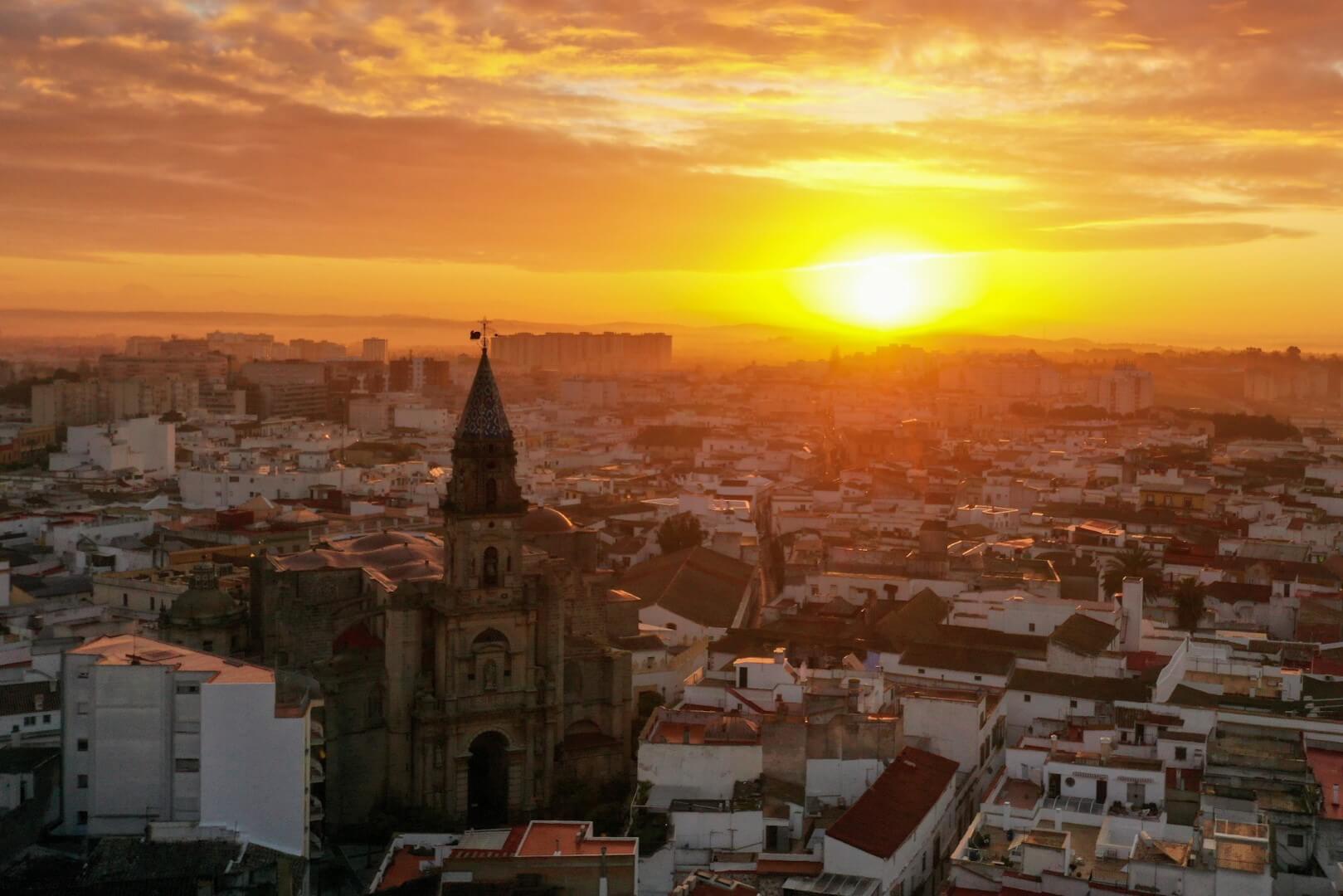
Jerez de la Frontera. It's almost impossible to talk about one of the most beautiful cities in the province of Cadiz without falling into the old clichés: horses, flamenco and wine. But the fact is that the wine cellars, the flamenco bulerías and horsemanship are very much a part of its essence, as much as the palatial houses, the wine shops or tabancos and the Alcazar.
To get your bearings in Jerez, the best thing you can do is to start right in the historical centre, at the Archaeological Museum, located in front of Market Square (Plaza del Mercado). The museum goes back to the 18th century and has one of the oldest collections of antiquities in Andalusia. The price of the entrance ticket (5 euros) is well worth it thanks to the exhibitions of pieces taken from archaeological sites in the city, and if you like numismatics, you'll love the coin collection room.
Now set off towards the Plaza de la Encarnación. Along the way you can admire the Palacio de Riquelme (16th c.), the church of San Mateo, the Palacio de Campo Real (16th c.), the Palacio Dávila (16th c.), with examples of Gothic, Renaissance and Neo-Classical architecture and hallmarks of different periods of construction in the city.
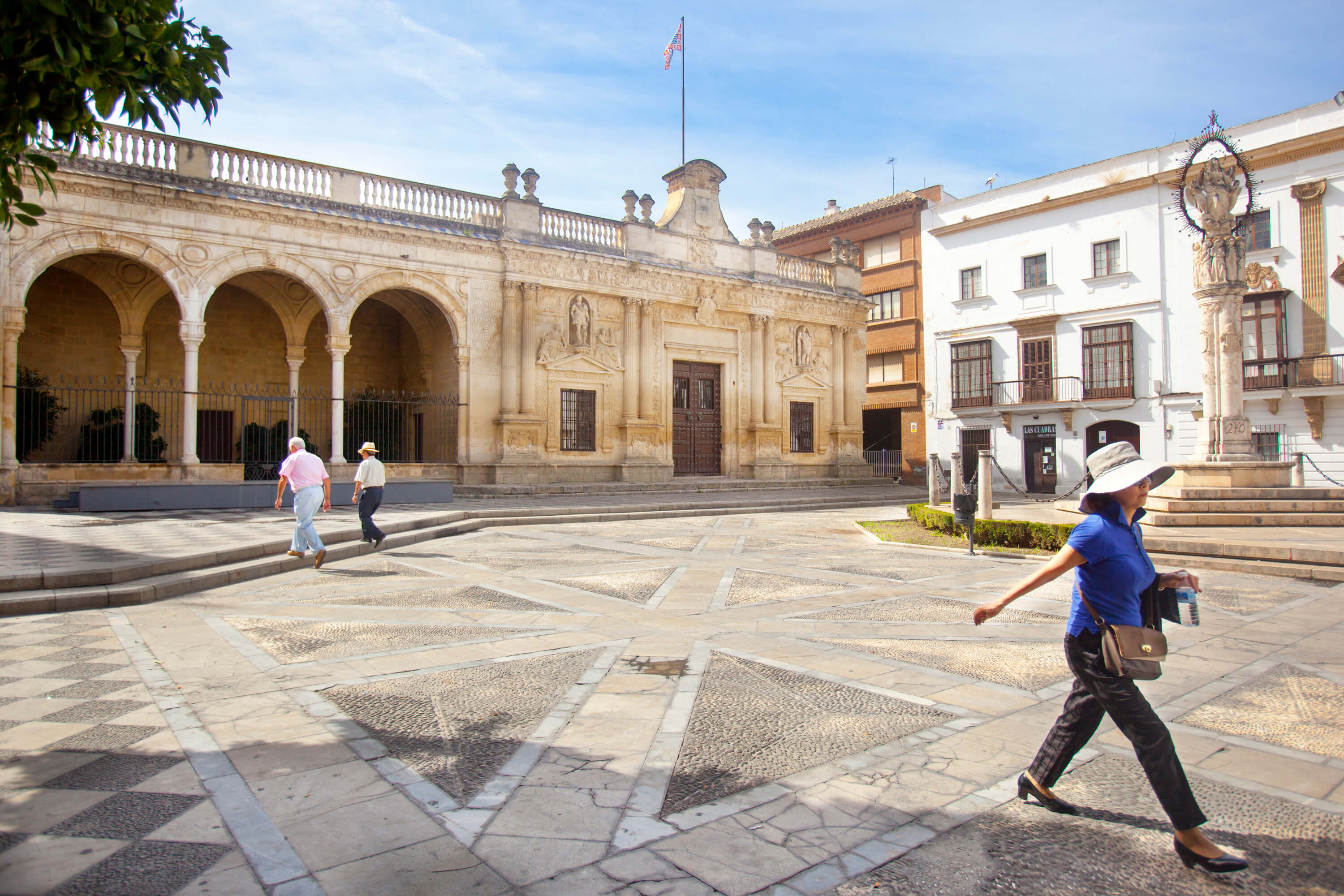
Inserta aquí una nueva sección
The majestic building that stands out on Calle Arroyo is the Cathedral of the Holy Saviour (17th-18th c.). It was built on top of an old mosque. Things worth seeing inside include the image of Cristo de la Viga (15th c.) and the Cathedral Museum, including a painting by Zurbarán, 'La Virgen Niña'. Don't go without your photo posing with the wind in your hair, admiring the most beautiful views of Jerez from the top of the Bell Tower. You can buy the entrance ticket at the Cathedral door or in the Church of San Miguel (opening hours and prices at https://www.catedraldejerez.es/horarios-y-tarifas/).
Nearby is the Palace of the Marqués de Bertemati (18th c.). Nowadays it is the headquarters of the Historical Archives of the Diocese. Entrance is free and inside you can see the elegant colonnaded patio and even arrange a visit to see the other parts of the palace at no extra cost (956 338 800).
Next to the Cathedral is one of the biggest wine cellar complexes in Jerez, the Bodegas González Byass. They are so large that you can visit them in a miniature train or by bike. This is the birthplace (in a figurative sense) of Tío Pepe, the most flamenco of the three most famous sherries in the world.
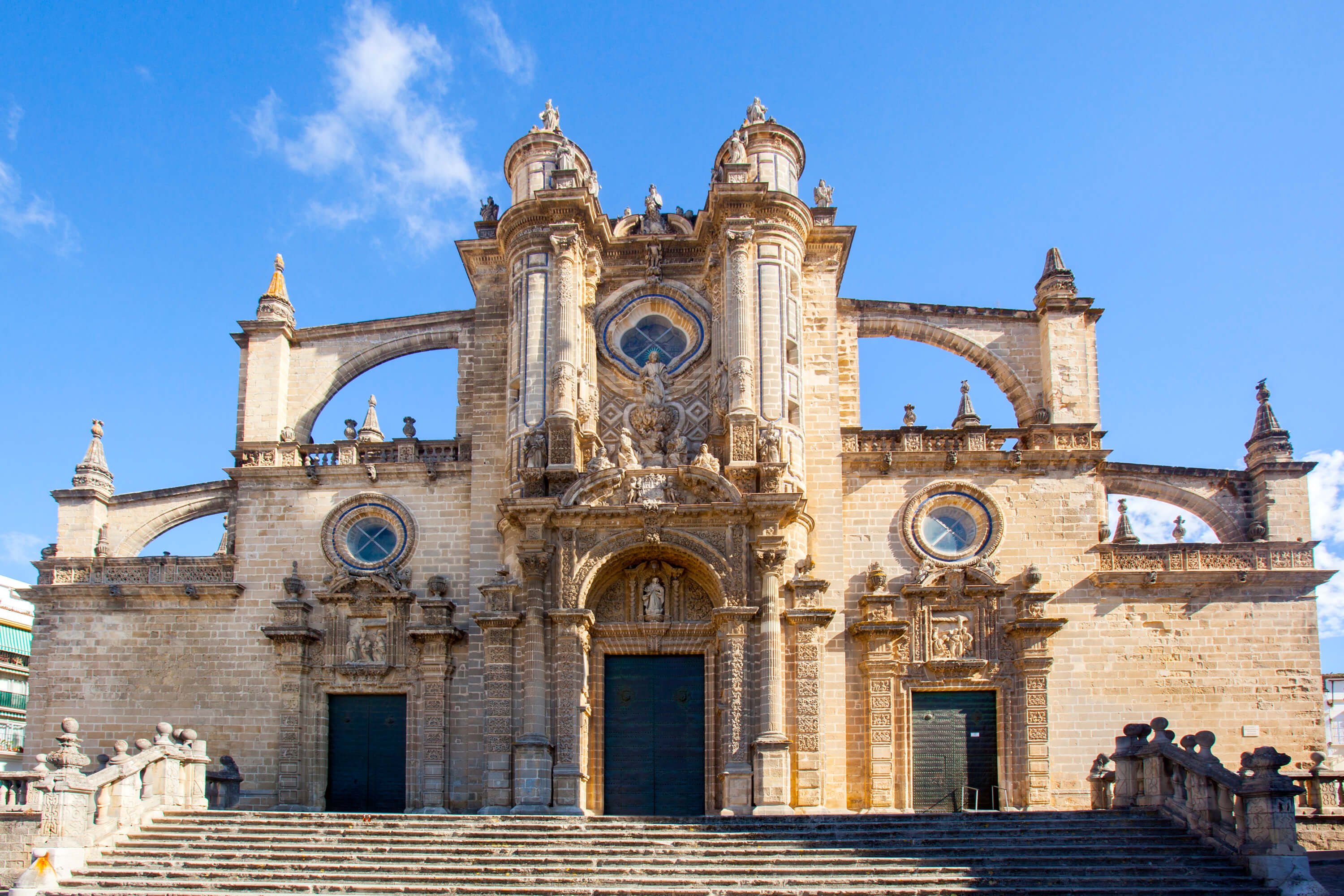
Now you've reached the Monumental Complex of the Alcazar, which dates back to the 12th century. It is strategically located at the topmost point of the city centre, which gives an idea of its military and defensive background. It is one of the few examples of Almohad architecture remaining in the Iberian Peninsula, although it underwent later modifications. The mosque, old palace, baths, gardens and parade ground are all conserved there. Other notable features include the Towers Octogonal and Homenaje.
The complex also includes a 17th century palace that contains the apothecary of the old municipal pharmacy, which is well worth a visit. If you're here on a Sunday morning, take a walk around the antiques fair in the Alameda Vieja, right at the foot of the Alcazar.
A little further up, around the Plaza de la Arenal, you'll find bars and restaurants where you can try the traditional cooking of Jerez and the famous wines of the region. In Calle Mesones, sample the canapés of Tabanco La Reja or enjoy the flamenco shows of the Tabanco called El Pasaje. We fell in love with the Spanish Potato salad at the San Pablo bar.
See route in map Google maps
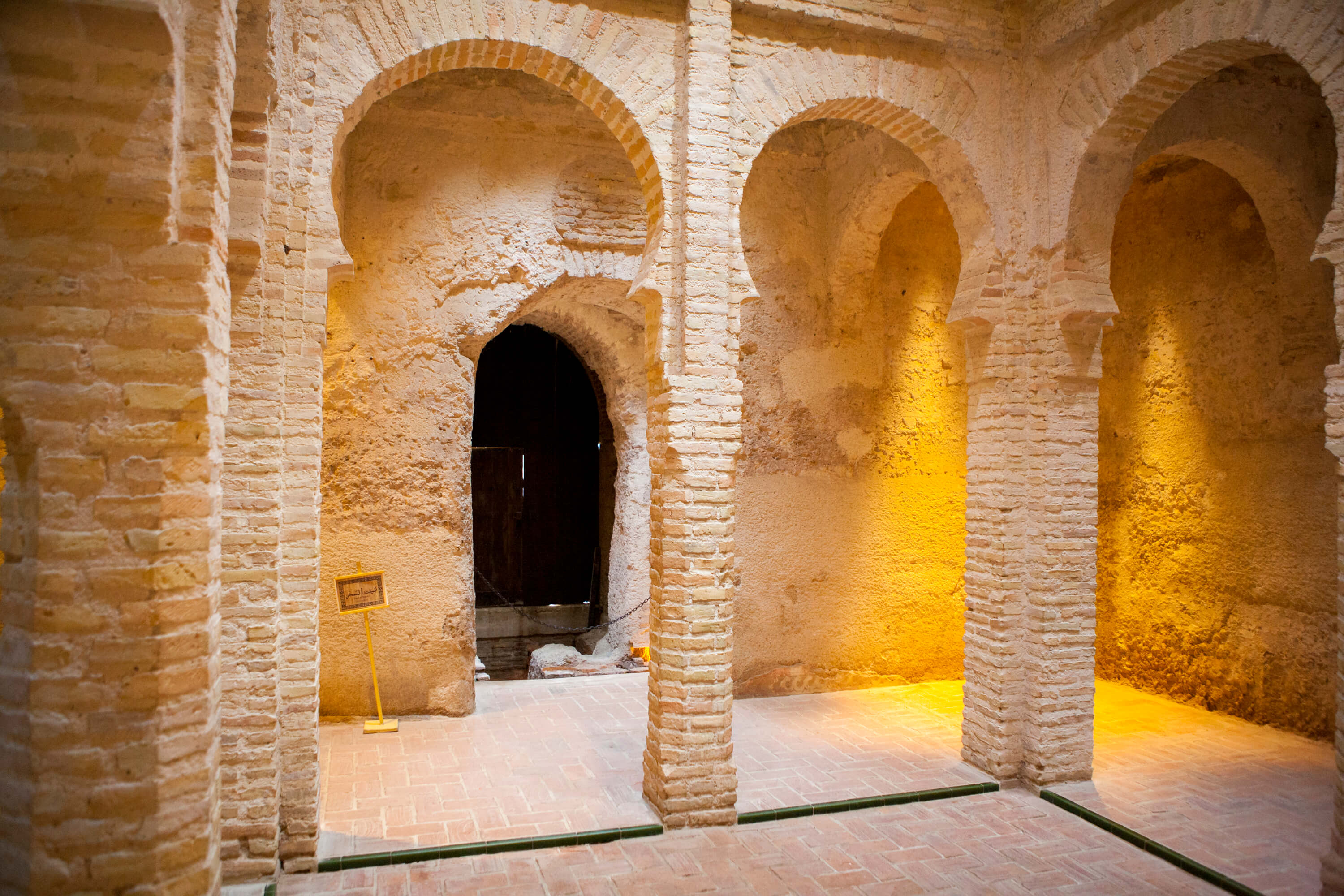
Now it's time to submerge yourself in the district of San Miguel. It takes its name from the largest church in Jerez (15th-16th c.). Built in the Gothic style, the interior is so full of decorative detail that you won't know where to look, which is a very good reason why they call it The Notre Dame' of Jerez.
Along with the district of Santiago, San Miguel is a cradle of flamenco in Jerez and the world. It has been the birthplace and home of some of the most legendary figures of this universal art form, such as Lola Flores and Paquera de Jerez. You'll find statues and references to these iconic figures as you wander along its narrow-cobbled streets. The tourism website of the City Government of Jerez has organised a number of routes in these districts that are absolutely essential for any flamenco lover. http://www.turismojerez.com/index.php/es/que-visitar-menu/rutas-turisticas/ruta-del-flamenco-de-jerez
It's no effort at all to find bars and taverns where you can have dinner to the sound of the song and dance of a flamenco group. In December, get hold of a programme for the hand drum or zambomba groups and enjoy a traditional Christmas just like any other local resident.
Now is a good time to rest. You've still got two days ahead. You can stay at any of the hotels in the area. There are all kinds for all tastes and wallets.
See route in map Google maps
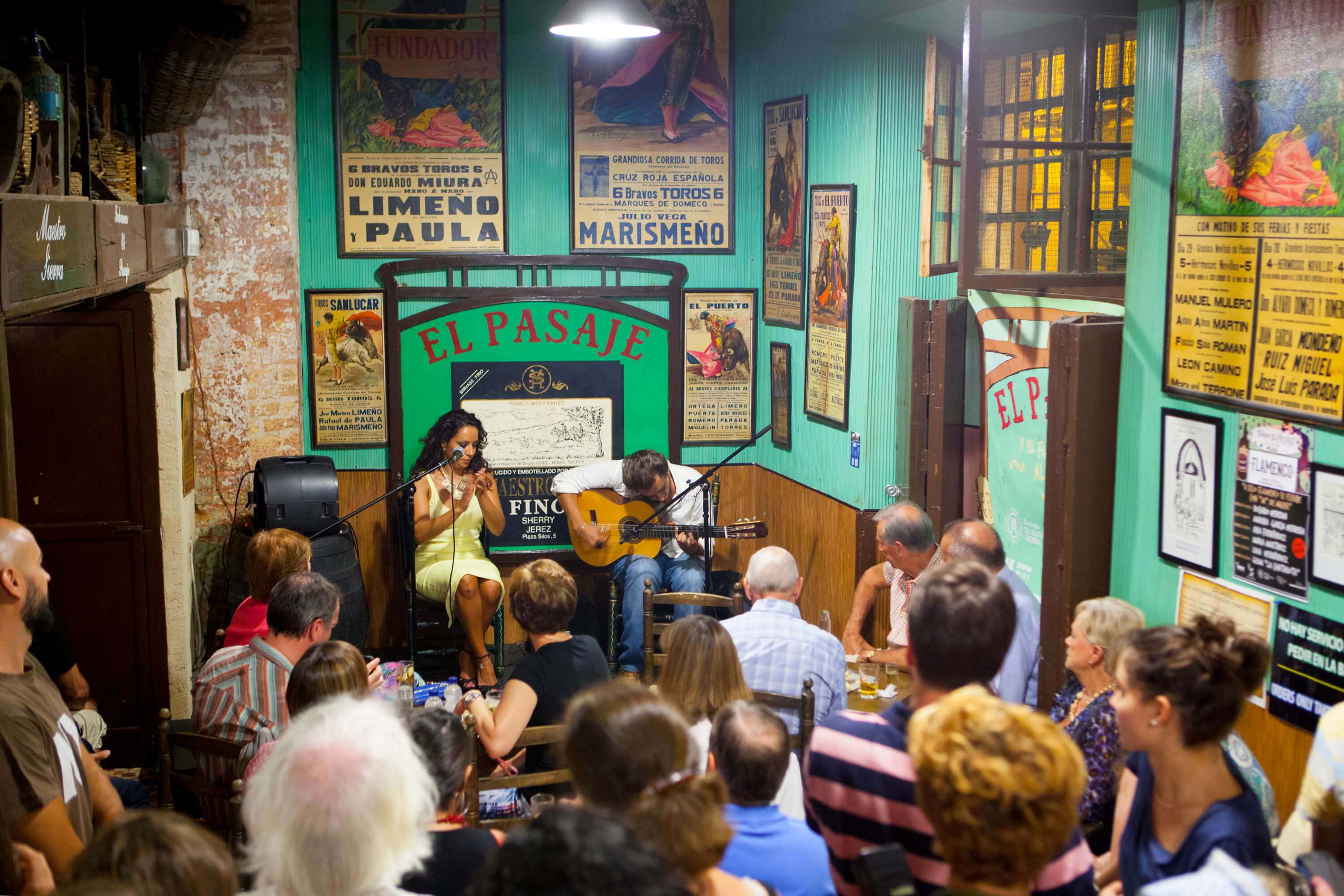
Jerez is the capital of wine thanks to a combination of fortuitous circumstances. They can be summed up as an ideal geographical location, a favourable climate, land perfect for farming and intensive trade since time immemorial. But such a brief description does little justice to a product, the wines of Jerez, which encapsulate a large part of the identity of the entire region.
Today we propose a visit to some of the many famous wine cellars of Jerez. As most of the visits to wine cellars start late morning to midday, you could start the day early with a good breakfast at one of the bars next to la Plaza, in other words, the Mercado Central de Abastos (C/ Doña Blanca) and then pay it a visit. It's an interesting building from a historical (1885) and architectural perspective (Neo-Classical). Sparks of culinary inspiration can be found amongst the stands full of fruit, vegetables, meat, fish, smoked and cured meats...
From there you can set off to the Bodegas Díez Mérito, Álvaro Domecq, Dios Baco, Fernández – Gao or Bodegas Fundador, to name just a few. They all offer visits in different languages (reserve beforehand, just in case), all kinds of experiences, including wine tasting, and you can satisfy your curiosity about how the wine is made.
If you plan it all just right, you'll have time to make a couple of visits to wine cellars before lunch. If home cooking is what you're looking for, they'll make you feel like part of the family at the Bar Sol y Sombra (breakfasts, lunches and afternoon snacks; dinners only on Fridays and during the City Festival).
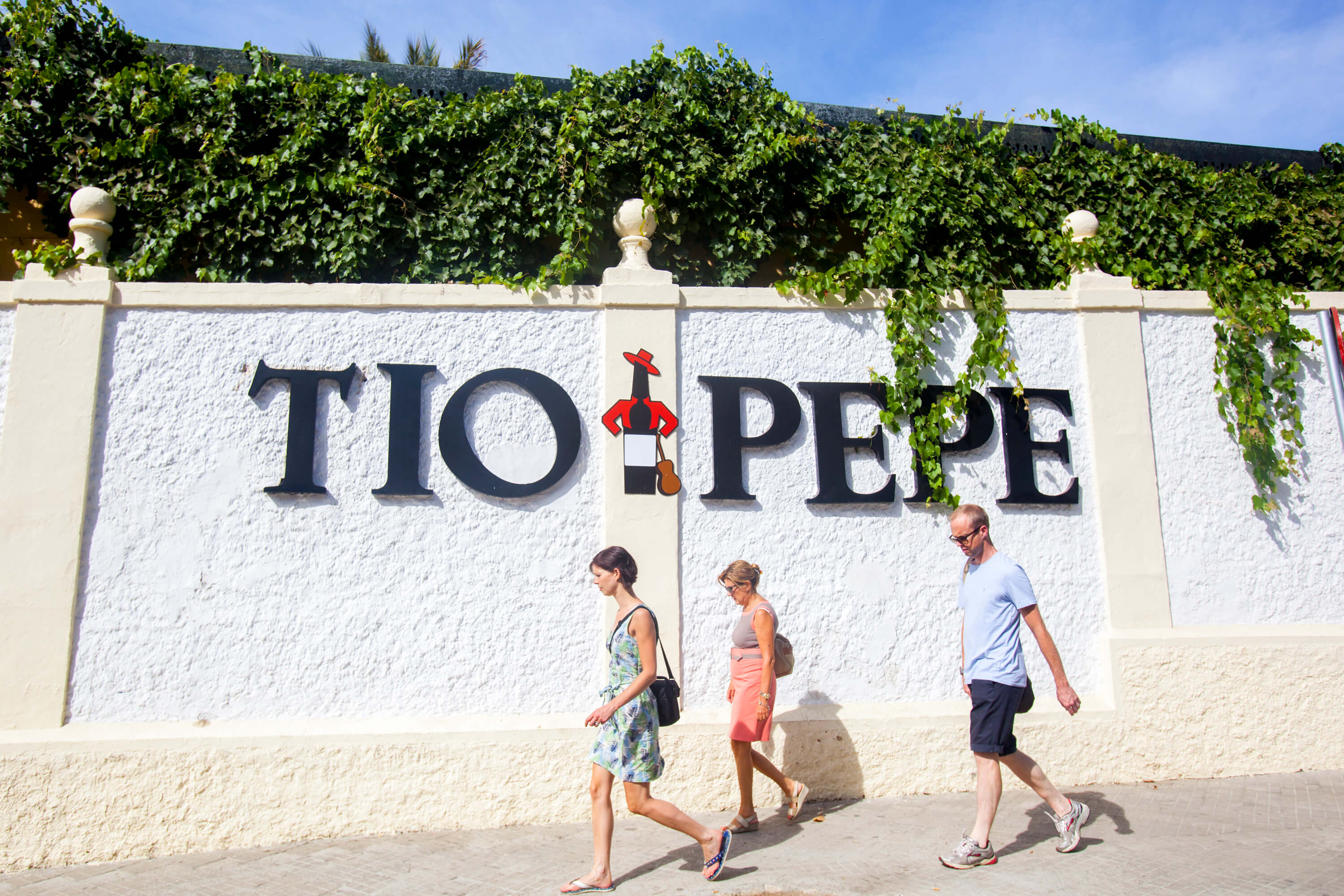
In the afternoon, while you're in the area take the opportunity and go to the Museo del Belén (C/ Circo). It's open from 19:00 (in the Christmas season, it opens morning and evening every day). There you can admire a Nativity Scene of 240 square metres along with another four scenes, dioramas and an exhibition of representative figures of Christmas art.
Just a short distance away you can take selfies in front of the Plaza de Toros, the city's temple to bullfighting. Then we'd suggest ending the day with some tapas at the Cervecería La Antigua Cruz Blanca (Avda Virgen de Fátima). Their papas aliñás (potatoes with boiled eggs and tuna) are rightly famous.
Or perhaps you've got time to go to the show at the Teatro Villamarta.
See route in map Google maps.
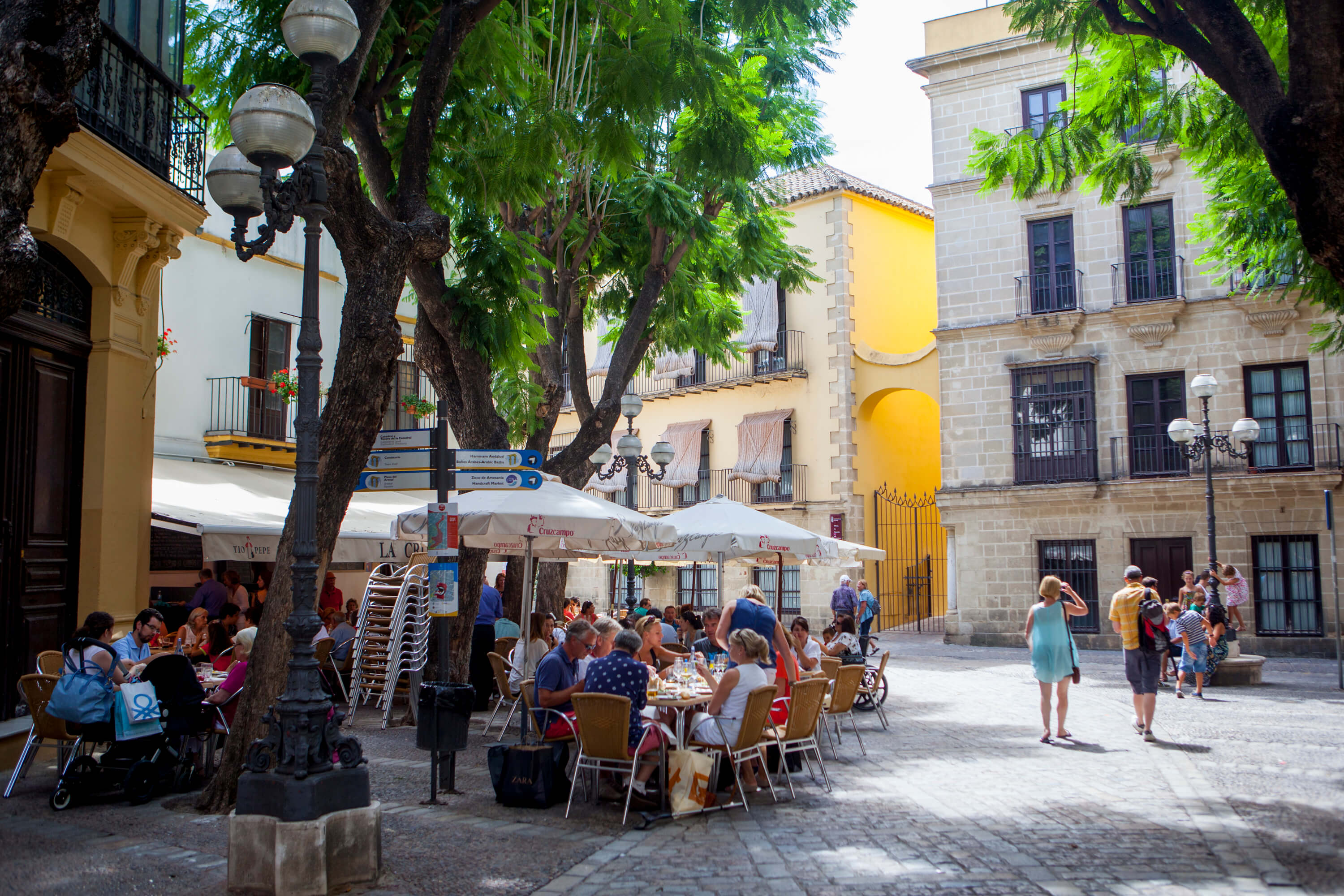
So, now you know all about the proud heritage of Jerez and its monuments, sherry and flamenco. But there's still its equestrian heritage, and to see that the best place to go is the Royal Andalusian School of Equestrian Art (Real Escuela Andaluza del Arte Ecuestre). You can get there by public transport, although we prefer to go for a walk. On the way, we will visit the Palace of Viceroy Laserna, in Calle Conde de los Andes. The building has belonged to the Jerez aristocracy since the 13th century. Its architectural and decorative richness are outstanding, as is its collection of classic furniture and perfectly preserved works of art. It is open from Tuesday to Sunday, in the morning and afternoon - Sundays only in the morning. For more information and to book, call 956348794.
From this palace to the Royal Andalusian School of Equestrian Art, we will see the Church of San Dionisio of Areopagita, which is in the Gothic-Mudejar style, the Atalaya watchtower, the convent of Santo Domingo, the Domecq Palace and the iconic Plaza del Mamelón.
The show 'How the horses of Andalusia dance' is a beautiful exhibition of training in the form of a ballet. The shows normally take place every Thursday. To enjoy the experience in full, take a guided visit where you can see all the facilities, including the museums of Equestrian Art and Carriages. Reserve a visit at: https://www.realescuela.org/es/visitareducida.cfm.
An alternative option is to visit the wine cellars of Williams & Humbert (Ctra. Nacional IV Km, 641). They have a spectacular programme that includes a bit of everything: wine cellars, tasting, flamenco, horse shows, museum, lunch and vineyards. Make a reservation at [email protected]. And at the wine cellars of Marqués del Real Tesoro y Valdespino (Grupo Estévez, IV, Carretera Nacional), you not only get to taste their excellent wines, you can also visit the Yeguada Real Tesoro, and see Spanish black thoroughbred horses. Once there another visit not to be missed is the Art Gallery. There are works there by Picasso, Dalí, Botero, Miró, etc. Call 956321004 to make a reservation.
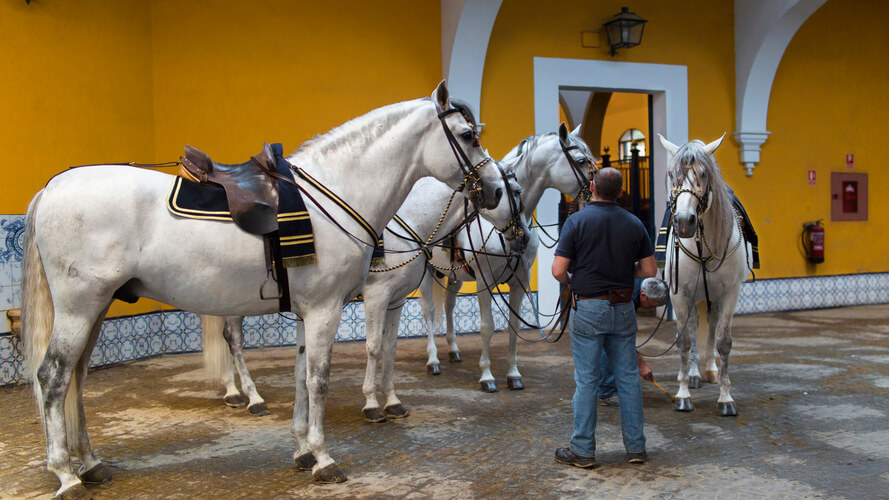
Today we propose a relaxing lunch at Universo Santi. Placed in the heart of an impressive late 19th century estate, the restaurant keeps faith with the legacy of the great chef Santi Santamaría, and is the first one in the world where all the employees are disabled people. You'll love it.
Make use of what's left of the evening to do some shopping in the centre and take some souvenirs home with you. For example, Expoflamenco, has souvenirs of all kinds, along with wine bars and shops selling typical hand made products.
And now that you've soaked up the essence of Jerez, how about putting it all into practice? Go for it and learn to dance flamenco, sing or play the guitar. There are classes for beginners at the Tablao Flamenco Puro Arte (call 660 030 420 to find out more). You can even have dinner there, with a flamenco show included and so end your stay at Jerez on a high note.
So, planning your next trip here already?
See route in map Google maps.
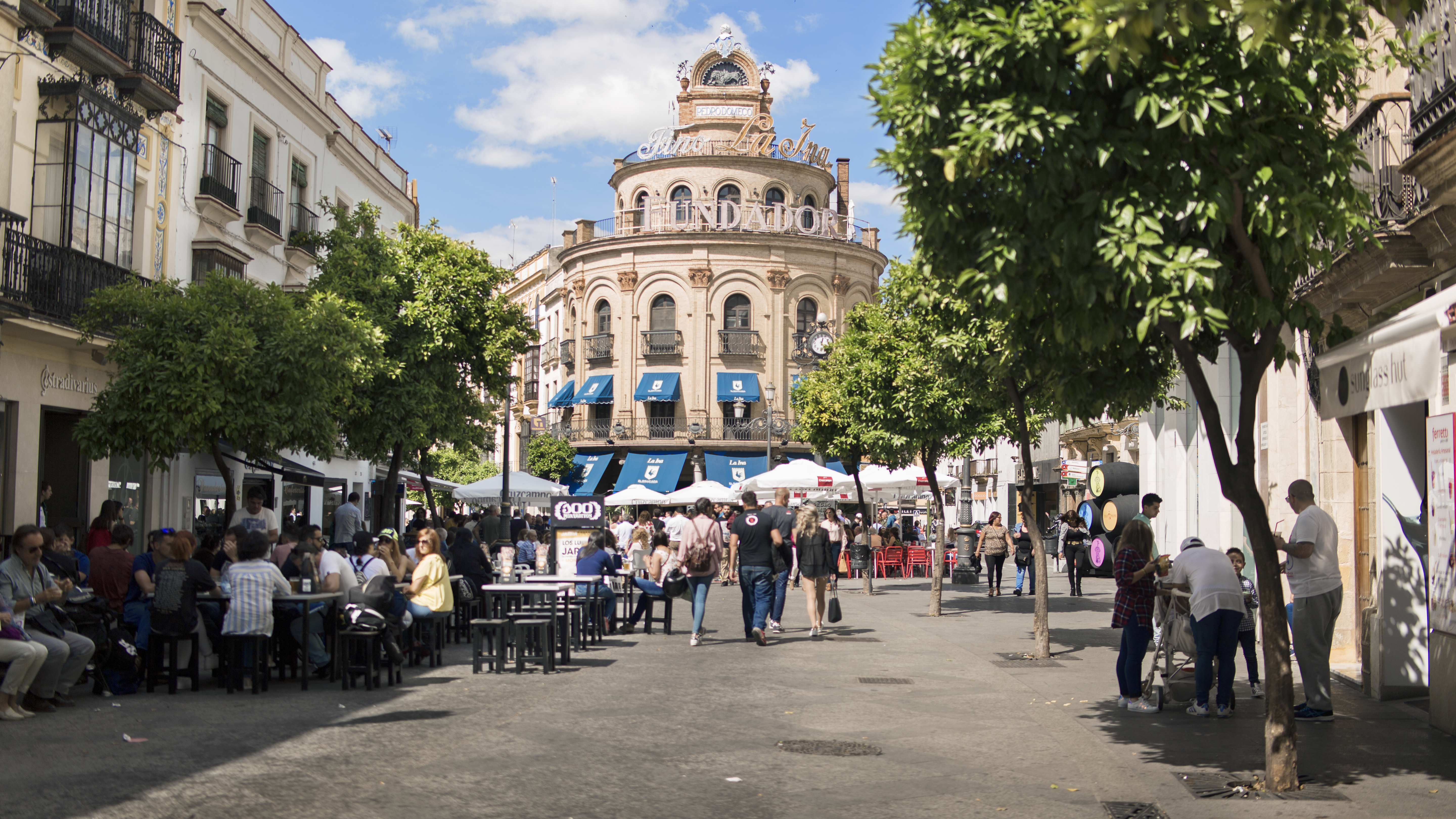
| Kilometres: 65 km. |
| Estimated driving time: 1 hour. |
| Recommended number of days: 3 |
| Attractions: Culture and heritage |
| See route in map: Cómo llegar a Jerez de la Frontera |
